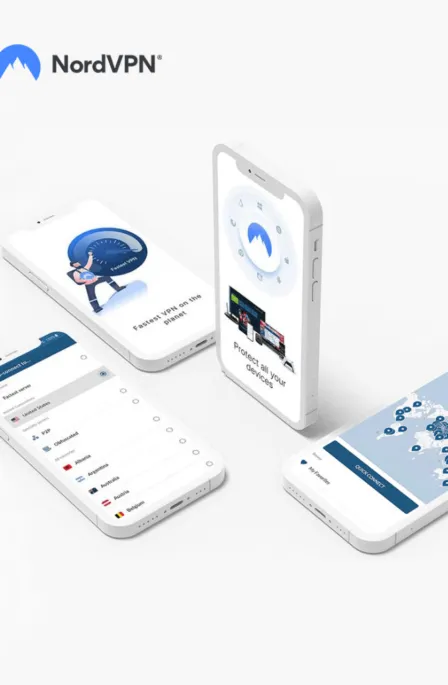IoT devices are vulnerable to cyber attacks. Some threats attack the unique nature of IoT devices. While other threats are aimed at the application network surrounding them, some might result from configuration errors that arise from user inexperience or system restriction. Below are the reasons of IoT devices’ vulnerabilities:
IoT devices’ security and safety, mainly intended for client use, remain at significant risk. This is because the number of users is increasing daily. Each of them has different IoT devices in their houses. They might connect to various networks to work from home, meaning more risks of cyberattacks.
IoT affects almost every aspect of our lives. If these devices become exposed to attacks, attackers can control our lives. This becomes a complicated situation to manage. But the main question is, what makes the IoT vulnerable?
Top seven IoT vulnerabilities
Below are the IoT vulnerabilities based on our research that you need to take care of and follow prevention measures to avoid them:
1. Poor web interface
Every user seeks an exemplary user interface, and IoT applications have controlling features and functions. Setting up devices and integrating them into faster systems and more manageable tasks than they might be. Most IoT devices have a built-in web server that hosts a web app. The web app manages the entire device.
However, the code might have faults and errors like any web app. These errors in the systems allow the device to get attacked. The weaknesses are remotely exploited because all devices are connected.
Secondly, another problem with IoT web interfaces is the same as that of plagued enterprise web apps. Although SQL injections are slightly less of an issue in IoT applications, command injections, cross-site scripting, and cross-site request fakes are all programming faults. These flaws can give criminals and attackers access to devices and a complete system for regulating, monitoring, and accessing real-world operations.
2. Ineffectual authentications
The authentication of a user for an IoT application is a good thing. When an app can control building access and environmental access, it should also spy on the inhabitants of a building. It looks like authentication is mandatory; however, in some cases, authentications are missing from the actions.
Two types of authentication are most important for IoT applications. The first one is user authentication. The problematic nature of IoT environments raises the question of whether each device needs authentication or if a single system authentication is enough for every device on the network. Most system designers choose the latter due to ease-of-use considerations. It makes strong authentications.
Another type of authentication is device authentication. A single sign usually makes this type of authentication. As the users are not verifying each device interface, the devices in the IoT network must require authentication among themselves. This is because the attacker may not use implied trust as a malevolent pathway to the system.
3. Locked-in defaults
The default user credential is the massive, alternating warning signals on IoT security settings. However, they are not the only settings that matter. The network parameters, which comprise ports used, setting users with admin privileges, logging (may or may not be), and event notifications (may or may not be), are amidst the security-focused settings that must be modified to meet the individual’s placement needs.
Further, allowing for the security settings that web more thoroughly with an existing environment security infrastructure, alternations to default settings often make the IoT attack surface a fine and less welcoming place for invaders.
4. Failure of Firmware
Firmware is like bacteria and peas, which grow from time to time. The problem with IoT devices is that there is no system or technique to load them, making them a severe vulnerability.
The disadvantage of continuously growing firmware is that the updates make the system a moving target. If the firmware on a device is static and immovable, it is easy for attackers to dissect it. Moreover, they can develop exploits in their leisure time and launch attacks that will work on every device.
Let’s take the example of the VPNFilter attack in May 2018. It is an example of what can happen when an entire group of devices can’t update or, if they are up to date, the users cannot apply the updates.
5. Poor network security
A poorly written IoT app device can make holes in your firewall from the inside out. These are the holes that an attacker uses to get into your systems and launch attacks on IoT devices. This is the same trick a simple user uses to install IoT devices on their home networks without changing their firewalls. It creates connections by firewalls that attackers can use to avoid the carefully considered protections.
However, in many cases, the firewalls face outward. This means they focus on traffic from outside, trying to get into the network. The IoT devices get around this by initially calling their control server inside the system. Later, they continue to maintain the connection with average transmissions.
Establishing connections can allow criminals to develop vulnerabilities in uncoded and unauthorized traffic. They then send the malicious traffic back to the network on the open connection.
6. MQTT problem
It is expected that issues will arise when a developer forgets about security. In the case of MQTT (a communication protocol from the world of industrial controls), hundreds of thousands of organized systems lack basic fundamental security.
It is essential to note that MQTT and other protocols’ weaknesses do not lie among them. The systems depend upon the internet. All attackers search for access to IoT devices to get data and launch malicious traffic. However, in this manner, these protocols are enforced.
7. Unsafe mobile interface
Now everyone wants to use their mobile phone for every small purpose. Many IoT devices have a mobile interface. Since these devices are mostly home products, this makes sense as to why computers are becoming less necessary.
But, another management interface is the violation that is waiting to happen. Building secure and safe software is not an easy task.
IoT devices have the potential to make human life much more comfortable. However, it is essential to address and consider the security issues first. If not discussed and solved, these issues might lead to severe trouble.
Share this article
About the Author
Rebecca James is an IT consultant with forward thinking approach toward developing IT infrastructures of SMEs. She writes to engage with individuals and raise awareness of digital security, privacy, and better IT infrastructure.
More from Rebecca JamesRelated Posts

How to Avoid Gambling Restrictions in 2024
KEY TAKEAWAYS Gambling is prohibited in multiple countries as it is addictive, and many people go ba...

20 Best Penetration Testing Tools For Security Professionals
KEY TAKEAWAYS If you’re in a hurry, then have a look at the list of 20 best penetration testin...

The Role of Developer Security in Software Development
KEY TAKEAWAYS The revolution of DevOps has reduced the SLDC and resulted in the creation of many sof...

How To Detect Hidden Cameras And Listening Devices? A Complete Guide
Many people feel like someone is watching them or listening to their conversations. They may be righ...

What is Virtual Firewall and How it Helps Us in 2024?
Scientists and technicians are trying to invent the latest technology protection to create barriers ...

7 Ways to Fight Against Ransomware Attacks
KEY TAKEAWAYS Ransomware attacks are growing frequently and affecting every sector of the business i...





